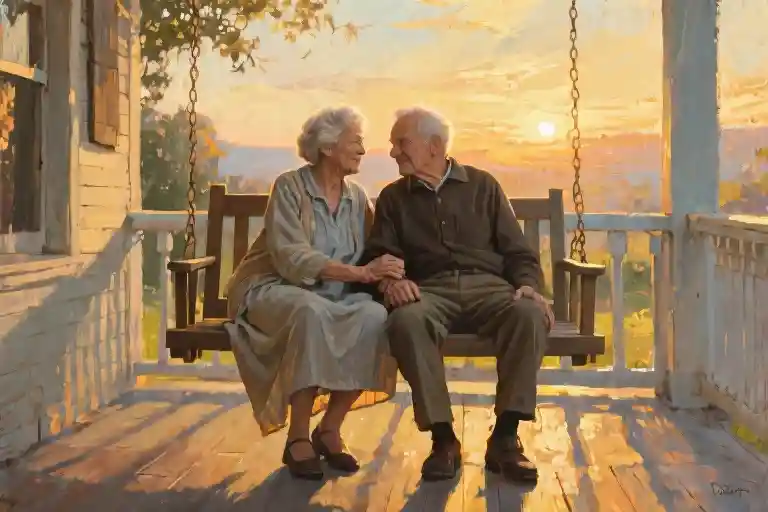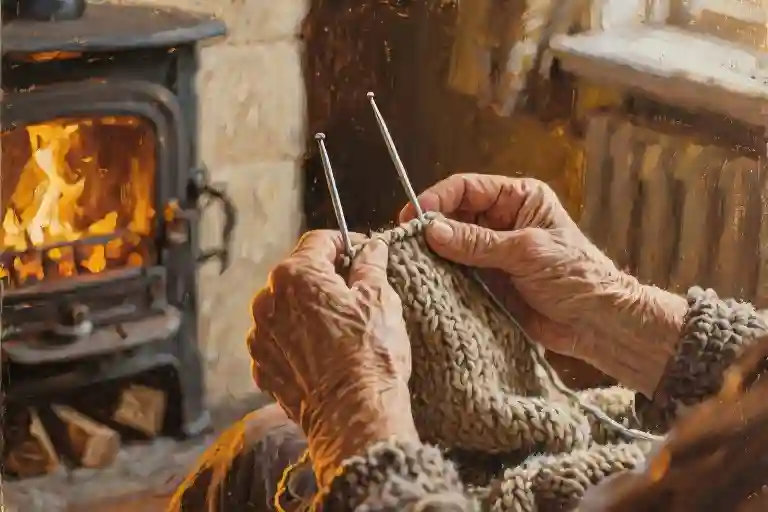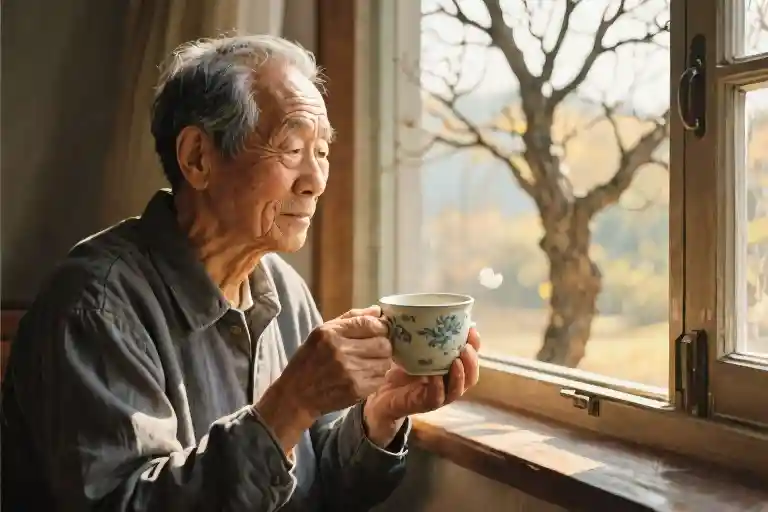Aunt Mary’s voice shook with fury as she glared at Uncle John in the hospital corridor: ‘After 37 years, you’re making me visit your mistress?’ The fluorescent lights hummed overhead, casting sharp shadows on John’s bewildered face as he reached for her arm. She jerked away, her wedding band catching the light—the same band she’d worn since Nixon was president. Nearby, a nurse pretended not to hear, her sneakers squeaking against the linoleum as she hurried past the confrontation.
John’s mouth opened, then closed. He’d rehearsed this moment during the entire drive to the hospital, but now the words dissolved like aspirin in water. ‘Mary, listen—’ he began, but she was already marching toward the elevators, her purse strap digging into her shoulder like an accusation. The automatic doors slid open with a sigh, swallowing her whole before he could say the one thing that might have stopped her: She’s your daughter too.
Later, in the parking lot, Mary sat rigid in the passenger seat, staring at a crack in the windshield they’d been meaning to fix. John gripped the steering wheel, his knuckles pale. ‘Nellie’s been asking for you,’ he tried. The name hung between them—three syllables that used to mean bedtime stories and skinned knees, college graduations and grandbabies. Now it was just a word that made Mary’s jaw tighten. ‘Don’t,’ she said, rolling down the window to let in the smell of rain on hot asphalt. Somewhere beyond the hospital walls, their granddaughter was probably finger-painting at preschool, blissfully unaware that her ‘Nana’ no longer remembered which colors she loved best.
For three days, the house vibrated with silence. John found Mary at dawn sitting at the kitchen table, tracing the wood grain with a finger as if following a map to somewhere safer. He wanted to tell her about the time Nellie, at six years old, had presented Mary with a dandelion crown and declared her ‘the best mom ever, even if we don’t match.’ But the memory felt too fragile to share—like handling a photo album with buttered fingers.
The Hospital Incident
The fluorescent lights hummed overhead as Aunt Mary’s hand tightened around the hospital railing. “After thirty-seven years,” she hissed, her voice barely above the antiseptic hospital murmur, “you’re making me visit your mistress?” The words hung between them like a scalpel poised to cut. Uncle John’s mouth opened, then closed, his fingers twitching at his sides as if grasping for explanations that kept slipping away.
Around them, the hospital continued its indifferent rhythm – the squeak of nurse’s shoes, the rattle of meal carts, the occasional intercom page. Mary’s knuckles whitened against her purse strap, her wedding band catching the harsh light with every agitated movement. John reached out, then let his hand drop when she flinched. “Mary, please,” he tried again, “it’s not what you—”
“Save it,” she cut him off, stepping back until her shoulders met the cold hospital wall. The smell of disinfectant mixed with the floral perfume she’d worn for decades, creating a strange bridge between the familiar and this sudden fracture in their marriage. Visitors shuffled past them, carefully avoiding eye contact with the elderly couple caught in what appeared to be a very private public moment.
John glanced down the corridor toward Room 307, where the outline of a woman could be seen sitting up in bed through the half-closed blinds. His shoulders slumped in a way that had nothing to do with his arthritis. The argument had started in the parking lot, escalated in the elevator, and now reached its crescendo here, under the flickering lights of the third-floor hallway. Thirty-seven years of shared history seemed to count for nothing against Mary’s sudden, unshakable conviction.
A nurse approached with a clipboard, sensing the tension but trained to push through it. “Visiting hours end in forty minutes,” she reminded them gently. Mary turned blazing eyes toward the young woman. “We won’t be needing that long,” she said, each word precise as a surgical incision. “Because we won’t be staying.”
John looked again toward Room 307, where the silhouette had now turned to face the window. Somewhere beyond that door lay the truth – not of any affair, but of something far more complicated. Something about family ties that memory could sometimes loosen but never quite sever. The number on the door gleamed under the fluorescent lights: 307. Just a number. Just a room. But inside, waiting patiently, was his daughter and her stepdaughter – a relationship that had never needed qualifying until today.
The Daughter She Forgot
The photograph album lay open on the coffee table, its plastic sleeves crackling with age. There she was—Nellie at six, grinning with missing front teeth, her small hands clutching Mary’s skirt. Another showed Mary braiding Nellie’s hair before a school dance, both reflected in a mirror framed with heart-shaped stickers. Thirty-seven years of motherhood preserved in fading Kodak moments, now holding more truth than Mary’s own mind could muster.
It happened on a Tuesday afternoon. The playroom echoed with the absence of grandchildren who’d left hours earlier, their crayon masterpieces still taped to the refrigerator. A woman moved methodically between toy bins, stacking blocks and untangling doll hair. Mary watched from the doorway, her forehead creasing as she turned to John.
“Who’s that girl in the playroom?” she whispered, as if speaking of a stranger.
John’s coffee cup paused midway to his lips. The steam curled between them like the ghost of all the explanations he’d given before. “That’s our daughter,” he said, emphasizing each word as one might speak to a child learning language.
Mary’s laugh came sharp and sudden, the kind reserved for ridiculous statements. “Don’t be silly,” she said, patting his arm. “I don’t have a daughter.”
In the kitchen, beneath a magnet from their Niagara Falls anniversary trip, John had pinned a scrap of paper with handwriting grown familiar: Memory loss symptoms—forgetting relationships, confusion in familiar places, insisting on incorrect facts. He touched it now as one might touch a wound, checking for fresh pain.
Later, when Nellie kissed her mother’s cheek before leaving, Mary accepted the gesture with polite detachment. “Your cleaning girl is very sweet,” she remarked to John after the door closed. The family cat wove between her legs, purring as if trying to jog some recognition. Outside, the swing set Nellie had played on as a child swayed empty in the wind.
That evening, John found Mary standing before the hallway mirror, tracing her reflection with tentative fingers. “Do I look like a mother?” she asked. When he opened the photo album to show her, she studied the images with the concentration of an archaeologist examining artifacts from someone else’s life.
The Nice Man
The porch swing creaked softly as Mary settled into its familiar rhythm, her hands folded neatly in her lap. The wind chimes hanging from the eaves played their fragmented melody, the sound both comforting and strangely disorienting. John had just excused himself to retrieve her coffee from the car—a small act of service that had become part of their daily ritual over four decades of marriage.
As his figure receded down the driveway, Mary leaned slightly toward my mother, her voice dropping to a conspiratorial whisper. “He’s a really nice man,” she said, nodding in John’s direction with something resembling shy admiration. The observation carried the tentative quality of a new acquaintance making polite conversation, not a woman describing the father of her children.
My mother, to her credit, simply nodded. “He is.”
There was profound tenderness in that moment, though it ached like a fresh bruise. The woman who once could recite John’s coffee order (large, two sugars, splash of cream) without hesitation now regarded him with the cautious warmth one might show a helpful neighbor. Yet some essential truth remained—she still recognized goodness in him, even as the particulars of their shared history slipped through her fingers like sand.
Earlier that afternoon, we’d watched Mary move through the house with quiet bewilderment, pausing before family photos as though studying artifacts from someone else’s life. When John handed her the framed portrait from their daughter’s wedding—Nellie beaming in white satin between them—Mary had traced the glass with her fingertips before asking, “Who’s the lovely bride?” The question landed with such casual innocence that John simply kissed her temple and said, “Someone very special,” before guiding her gently toward the porch.
Now, as John returned with the steaming mug, Mary accepted it with a smile that held both gratitude and something more perplexing—the faint unease of receiving kindness from a stranger. Yet when the wind caught her scarf, it was John’s hands that reached instinctively to retie it, his fingers remembering the knot she’d taught him years ago when the children were small. Muscle memory outlasting conscious recollection.
This is how love adapts when memory falters. The grand gestures of early romance—the bouquets, the anniversary trips—give way to smaller, more vital acts: tying scarves against the wind, pretending not to notice when the same story gets told three times before lunch, learning to be introduced anew each morning. John had become both husband and kind stranger, tending to a woman who sometimes looked at him with the startled recognition one might give a familiar face in a crowded train station.
As the afternoon light faded, Mary dozed against John’s shoulder, her breathing evening out to match the swing’s steady motion. The wind chimes stilled momentarily, and in that quiet, John adjusted his position just enough to keep her comfortable—a movement so practiced it seemed less like choice than reflex. However Mary’s mind might recast their relationship from moment to moment, John’s body remembered its lifelong role: to be there when she leaned.
Perhaps this is what endures when names and dates abandon us—not the facts of our love stories, but their emotional residue. The instinct to trust someone who feels like safety. The unshakable sense that this person, whoever they might be in this confusing moment, is fundamentally good. That they will, without fail, bring you coffee when you’re cold and catch you when you sway.
When Mary murmured “nice man” on that breezy afternoon, she wasn’t wrong. Just incomplete. The decades of shared history that made John more than nice—that made him hers—might be fading, but the essential truth remained: she still knew him, even when she didn’t remember knowing him.
The wind picked up again, carrying with it the scent of approaching rain. John shifted slightly, careful not to wake Mary, and reached behind them for the afghan they’d brought outside earlier. As he tucked it around her shoulders, his wedding band caught the fading light—a small, bright reminder that some promises outlast even memory.
When Memories Fade but Love Remains
The human mind has its own mysterious ways of letting go. One day it might erase the name of a beloved child, yet preserve the warmth of a handhold from fifty years ago. What happened with Aunt Mary and Uncle John isn’t just a story about memory loss—it’s about how love lingers in the cracks of our crumbling recollections.
The Silent Alarms We Often Miss
Early signs of cognitive decline rarely announce themselves with dramatic fanfare. They slip into daily life disguised as quirks or momentary lapses:
- Familiar Faces Turn Strange – When a mother doesn’t recognize her own daughter in the playroom, it’s more than forgetfulness. Medical professionals call this ‘prosopagnosia,’ where the brain disconnects visual recognition from emotional memory. The person might not remember who you are, but their body still relaxes when you hug them.
- Time Becomes a Tangled Thread – Dates and sequences blur. Last week’s hospital visit might feel like yesterday, while childhood memories surface with startling clarity. This explains why Mary could vividly recall John’s alleged affair (a decades-old insecurity) but not their shared parenting years.
- Emotional Memory Outlasts Facts – That porch moment revealed something profound: Mary forgot John was her husband, but her body remembered safety in his presence. The hippocampus may deteriorate, but the amygdala often preserves emotional imprints. Hence the quiet certainty in her whisper: “He’s a really nice man.”
- The Parrot Phenomenon – Notice how people with memory loss often fixate on certain phrases? Mary’s repeated denial (“I don’t have a daughter”) wasn’t stubbornness—it was her mind clinging to one intact ‘script’ when other neural pathways failed.
- Routine Becomes Sacred – The woman cleaning the playroom wasn’t just tidying up; she was following deeply grooved neural tracks. Tasks performed thousands of times (like straightening cushions) often survive when spontaneous cognition fades.
Speaking the Language of Lost Memories
When words fail, here’s how to keep the conversation going:
Don’t Correct, Connect
Resist the urge to say “That’s not true” when someone misremembers. Instead, follow their emotional lead. When Mary insisted she had no daughter, a better response might be: “Tell me about the children in your life.” This invites sharing without confrontation.
Anchor to the Present
Sensory cues bridge memory gaps. That windy porch visit worked because:
- The coffee’s warmth gave Mary tactile grounding
- Rustling leaves provided soothing white noise
- Familiar rocking chair motion triggered muscle memory
Let Stories Breathe
Rather than quizzing (“Remember when…?”), offer narrative fragments: “I heard a funny story about a little girl who…” This removes performance pressure and often coaxes out hidden memories.
Your Turn to Share
We’re collecting stories about love’s persistence beyond memory. Maybe you’ve seen:
- A grandfather who forgot names but still hums lullabies he sang to babies sixty years ago
- A wife who sets the table for two every night, though she’s been widowed for a decade
These aren’t just symptoms—they’re love letters from the deepest parts of our humanity. What’s yours?





